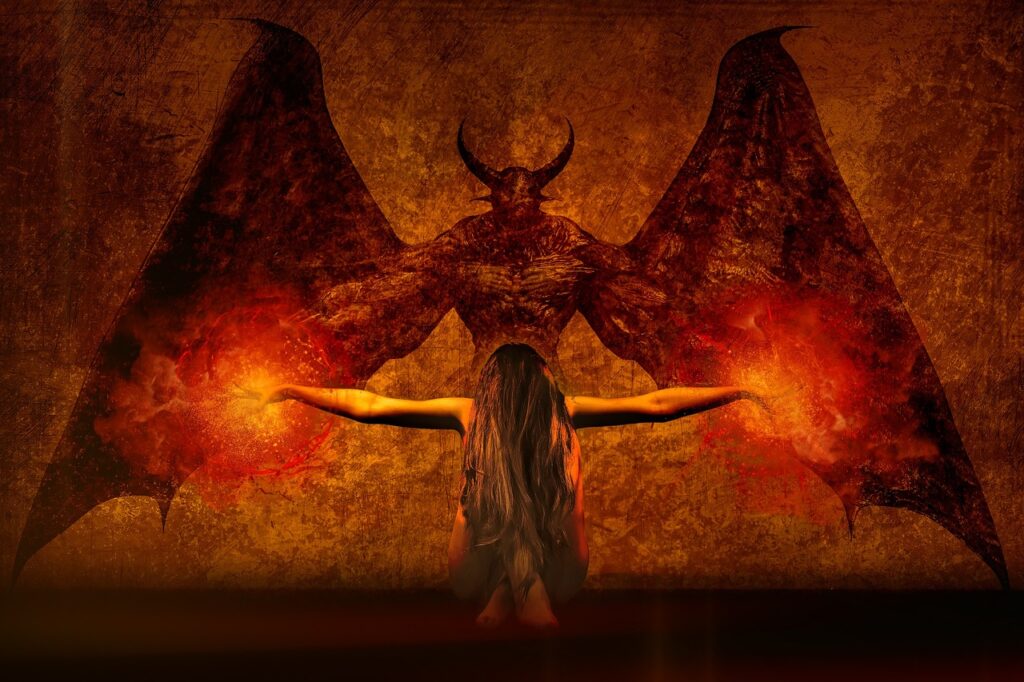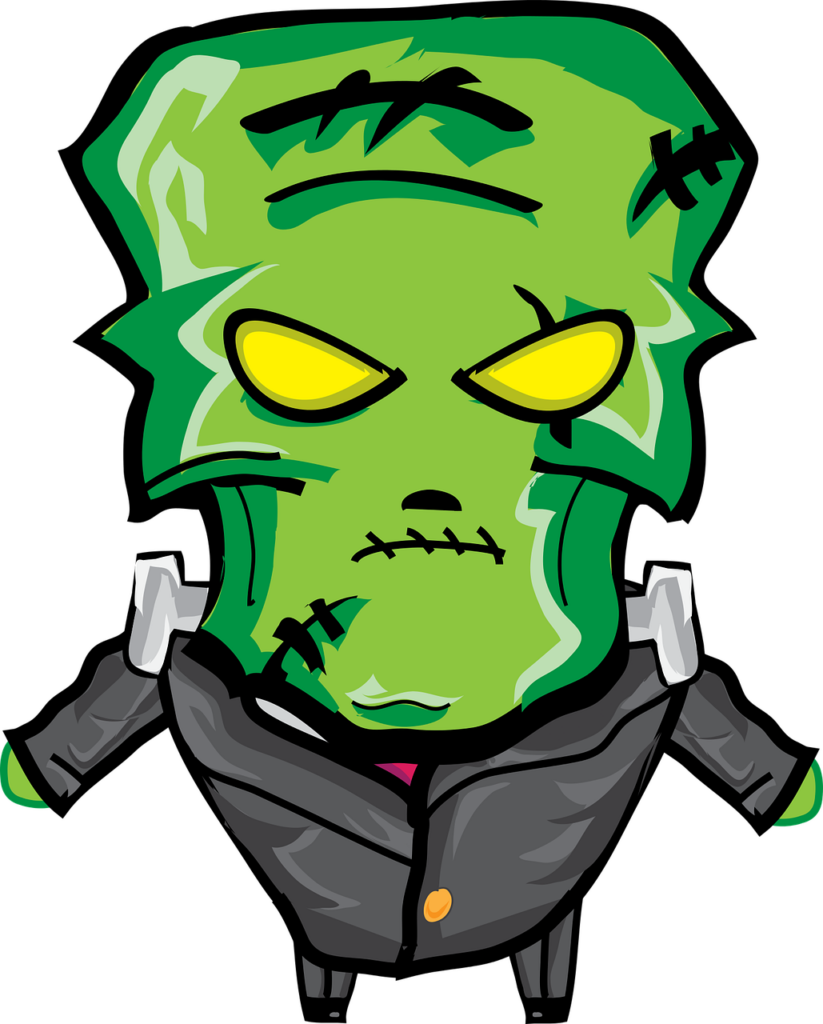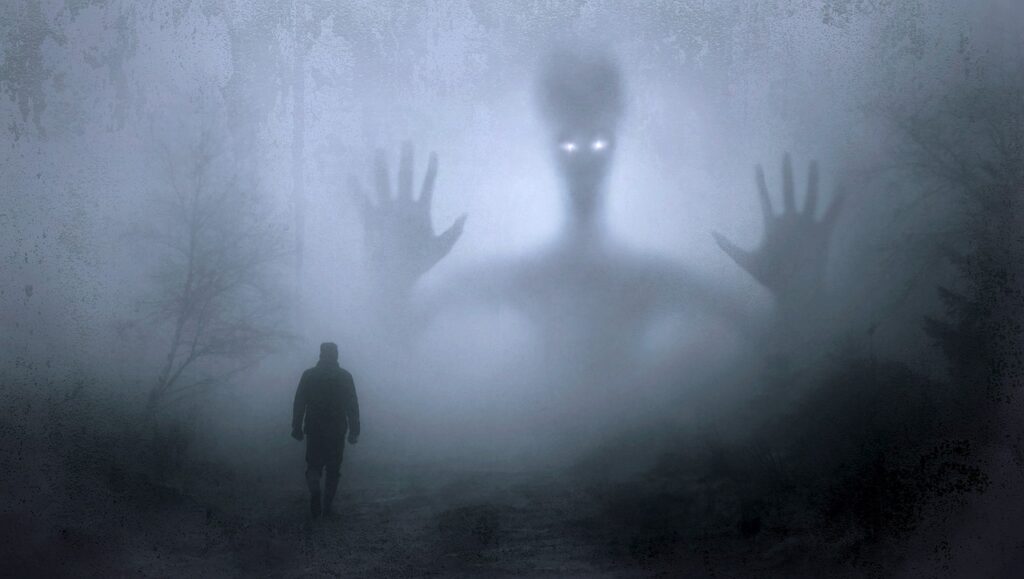In the land of enchanting moonlight and clinking candy buckets, a passion for Halloween isn’t just about costumes and sweets. Your journey into “Modern Monsters: Societal Fears in the Aura of The Halloween Junkie Take” will be an exciting ride. This piece draws parallels between the spine-chilling creatures we love on Halloween and the bigger fears we face in society. Expect a different kind of trick-or-treat, full of imaginative tales and thoughtful ideas. Let’s stroll through the pumpkin-lit path where modern monsters reveal surprising truths about our world.

This image is property of pixabay.com.
Modern Monsters: Pioneer of Social Narrative
The monsters that you come across in stories or scary movies are not just characters meant to give you a fright. Modern monsters are often a mirror of the fears we as a society have. Just like how you peek from behind your blanket during a spooky scene in a movie, society too peeks into its shared fears through these monsters.
Unveiling the basics of modern monsters
Monsters today may take various shapes, be it large scary beasts, creepy crawly bugs, or even human-like characters that act in terrifying ways. They are not just meant to scare you but also to make you think about why they scare you. It demonstrates the things that people worry about, but often don’t talk about.
The intertwined relationship between societal fears and horror narratives
As society changes, so do the things that we fear the most. You might be scared of different things at different ages. Similarly, as society grows and changes, the monsters we create in stories and movies change to reflect newer fears. They become a way that society can explore these shared worries and fears.
Understanding the purpose of Modern Monsters
Modern monsters serve a very special purpose. They help us face our fears in a way that you might face your fear of dark by being at your bravest during ghost-story sessions at sleepovers. By giving a shape to societal fears, these monsters offer a way to look at, and handle, those fears.
Journey from Past to Present: Evolution of Monsters
Monsters have been a part of stories since a very long time. Ancient stories had creatures like dragons and giants, whereas modern stories have more human-like monsters. Let’s look at how these changes have happened.
From ancient folklore to contemporary cinema: the transformation of monsters
In the olden times, monsters were often huge, mythical beasts like dragons or giants. In today’s stories and movies, monsters may look more like humans you see everyday, but they act in awful and terrifying ways. This change shows how our fears have shifted from mythical creatures to more real-world issues.
Portrayal of societal telltales through past monsters
The olden stories often had monstrous characters that represented the worries of the people of those times. For example, the stories about sea monsters might have reflected the fear of the unknown depths of the ocean. These stories and monsters captured the fears of those times.
Understanding the transition towards modern horror in correlation with changing societal fears
As times changed, so did the fears of the people. The big scary creatures of the olden stories were replaced with more modern and familiar threats in the form of human-like monsters. This change shows how societal fears have transitioned over the years.

This image is property of pixabay.com.
Analysis of Contemporary Monsters
Let’s now look at the monsters of today’s stories and what they reflect about the society.
A detailed study of modern monsters
Modern monsters often look like normal people but act in ways that are truly terrifying. They might reflect fears related to technology, privacy, or other societal issues. For example, some monsters may represent the fear of technology taking over our lives.
The reflection of societal anxieties in present-day monsters
The monsters of today’s horror movies often capture the shared fears of society. These could range from fear of isolation or fear of losing control over our lives. By embodying these fears, the monsters reflect the current anxieties of the society.
The cultural significance of current terrifying figures
Modern monsters hold a cultural mirror to the society. By reflecting what scares the society, they help us understand our shared anxieties and help us cope with them.
Role of Halloween as a Horror Culture Landmark
Halloween is a time when society openly celebrates the things that scare us. Let’s look at how Halloween plays into the horror culture.
Halloween and its role in exhibiting societal fears
Halloween provides a setting where we can confront our fears in a fun and safe way. Dressing up like monsters or watching scary movies during this time is a way to explore and laugh at our fears.
The celebration of macabre and the reflection of societal fears
On Halloween, we celebrate all things spooky and scary. By doing so, we reflect the societal fears in a celebratory manner, thereby reducing their scariness.
Modern Halloween narratives and their smart connection with societal anxieties
In Halloween narratives, we often deal with the same fears that we face in real life. By exploring these fears through fun and scary stories, we find a way to handle these anxieties better.

This image is property of pixabay.com.
Halloween Junkie: An exemplar of Horror Narratives
Consider the Halloween Junkie, a horror story fan who delves into the monstrous narratives every Halloween.
Introduction to the Halloween Junkie
A Halloween Junkie is someone who loves all things related to Halloween and horror narratives. They are often seen immersing themselves in scary movies and spooky costumes during the Halloween season.
Analyzing the Halloween Junkie’s monstrous narratives
A Halloween Junkie’s narratives often revolve around societal fears and thus, they offer us a deep insight into what society is scared of. These narratives serve as a mirror to our societal fears.
How Halloween Junkie mirrors societal fears
By delving into various horror stories and exploring different kinds of monsters, the Halloween Junkie ends up reflecting the fears of society. Their narratives and choices of stories often correspond with the anxieties of the society.
Real World Terror vs. Fictional Horror
While monsters may be fictional, they often reflect real-world fears. Let’s now look at the connection between real-world terrors and fictional horror.
The contrasting and paralleling aspects of real and fictional anxieties
Though monsters in stories or movies are not real, they often symbolize real-life worries and fears. By looking at these fictional monsters, we can better understand our real anxieties.
How shared cultural fears influence both real and imaginary horrors
The fears we face in our day-to-day lives often influence the monsters we create in stories and movies. The monsters become a mirror to our societal fears and thus help us cope with them.
Creepy tales: a cathartic approach to coping with real-world terrors
Scary tales about monsters can be a cathartic way to deal with real-life terrors. By exploring these fears through stories, we find a way to confront and handle these anxieties.
Dissecting the Fear Factor: A Psychological Examination
Looking into the psychology of fear can give us insights into societal fears and how horror narratives impact them.
The psychological driving factors behind societal fears
Our society’s fears are often driven by changes or issues faced by the society at large. This can include worries about technology taking over our lives or fears about losing our privacy.
The role of modern horror narratives in stimulating and alleviating fears
While modern horror stories might stoke the fire of our fears, they also provide a safe space to face these fears and make them less scary.
The cathartic role of fear: a paradoxical comfort in horror stories
Though fear in itself isn’t pleasant, confronting it through scary stories can be strangely comforting. In a way, it can help us deal with the fear and find comfort in knowing that we’re not alone in feeling scared.
Impact of Horror Narratives on Society
The horror stories that we share have a profound impact on our society.
Analyzing the societal changes instigated by horror narratives
Horror narratives play a role in shaping societal norms and behaviours. By drawing attention to societal fears, they can lead to changes in society and our behaviors.
The influence of horror tales on societal behavior and norms
The fears highlighted in horror stories can influence how society behaves, leading to adjustments in societal norms. For example, stories about technology-gone-wrong can lead to discussions and changes in how we use technology.
Horror culture: a tutor or a reflection of societal fears?
Horror culture both reflects and shapes societal fears. On one hand, it mirrors what society fears the most. On the other hand, it can also influence those fears and attitudes related to them.
The Future of Modern Monsters
Monsters have come a long way from the mythical beasts of old scary stories. Let’s look at where they might be heading in the future.
Predicting the evolution of horror narratives and monsters
In the future, we can expect the monsters to continue reflecting the evolving fears of society. As our society and fears change, so will our monsters.
Speculating the future societal fears
While predicting future fears isn’t straightforward, we can make some educated guesses based on current societal concerns. These could potentially translate into novel horror narratives and monsters.
The prospective role of horror stories in shaping societal anxieties
Horror stories will continue playing a crucial role in expressing and shaping our fears. They will provide a platform to explore these anxieties and find ways to navigate them.
The Halloween Junkie Take
A Halloween Junkie looks at societal fears through the lens of horror narratives. They get a thrill out of uncovering the fears of society and laughing in the face of them. As they say, a Halloween Junkie is always “Scared, yet entertained.”
The wit and wisdom from a Halloween Junkie
A Halloween Junkie might seem like someone who just loves all things spooky, but they actually hold a valuable perspective on our societal fears. By delving deep into horror narratives, they gain a unique wisdom about society’s anxieties.
The Halloween Junkie’s take on current societal fears
The Halloween Junkie can offer a refreshing and insightful take on what society fears the most. They can help us understand these fears and find quirky and fun ways to face them.
Fun reflections on modern culture and our collective fears
A Halloween Junkie’s reflections on horror narratives and societal fears are often filled with humor and wit. They find lightness in darkness and laughter in fear, making it all the more fun to navigate our collective fears.
